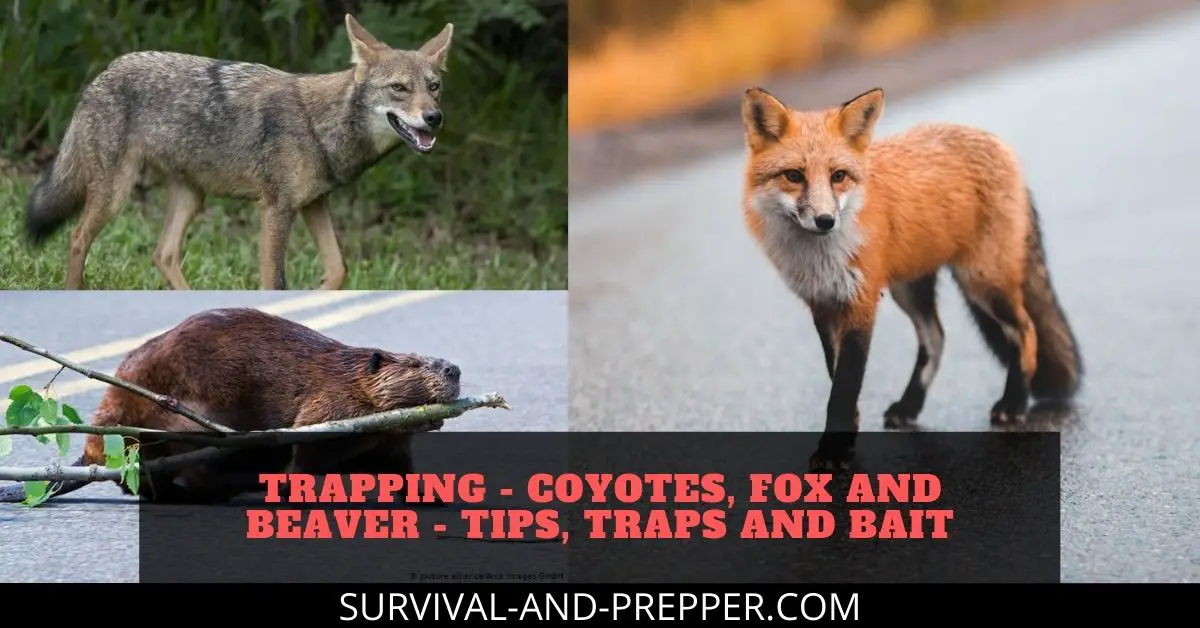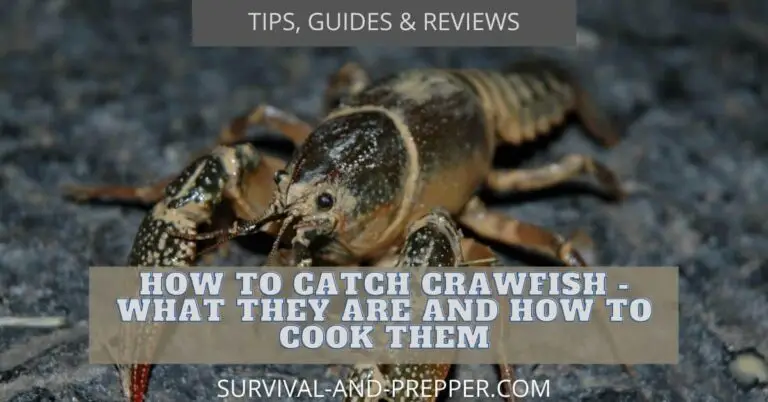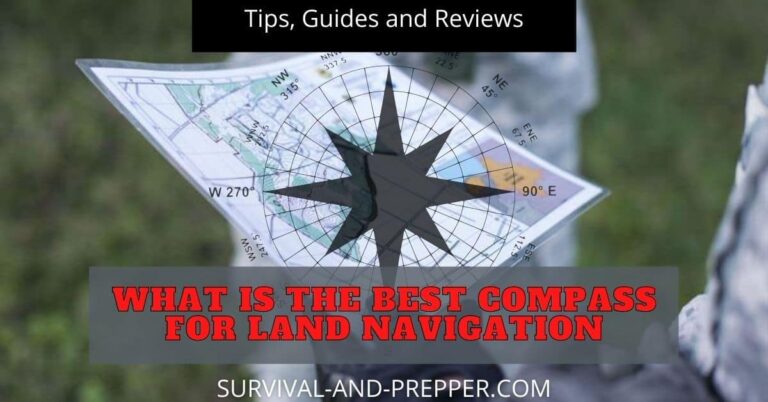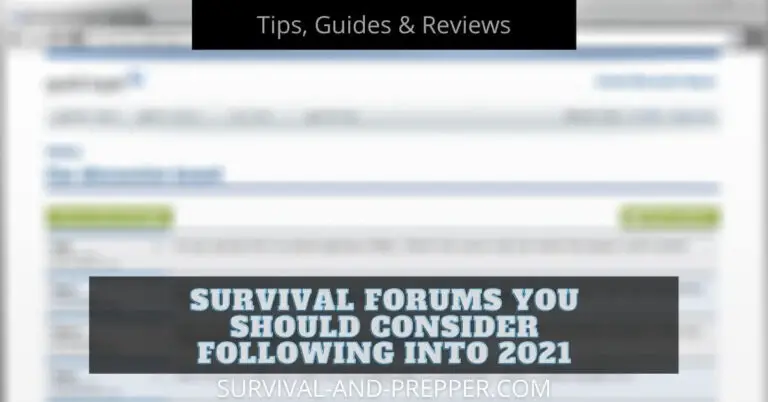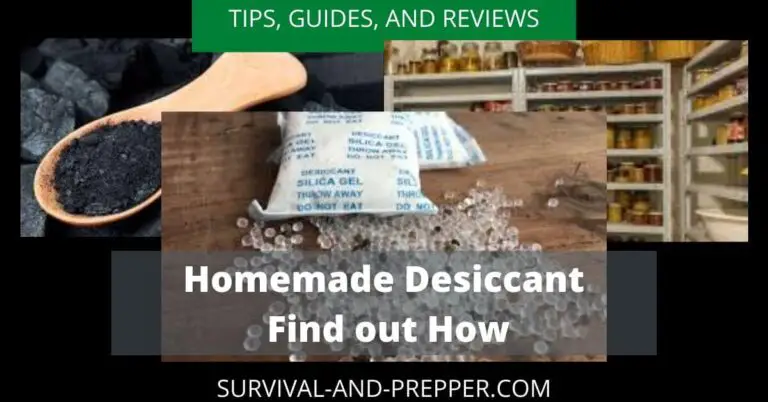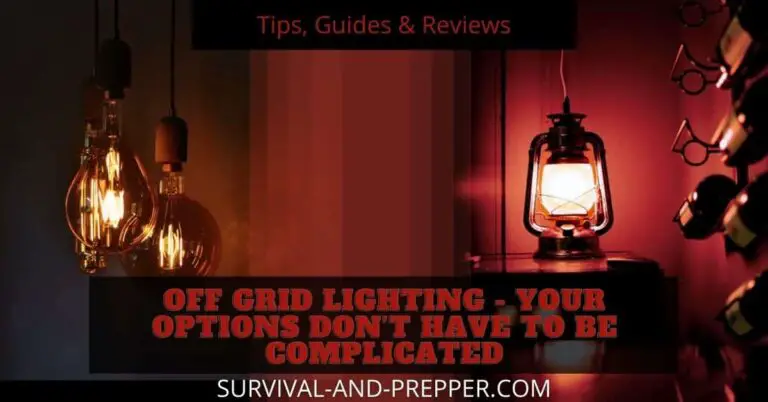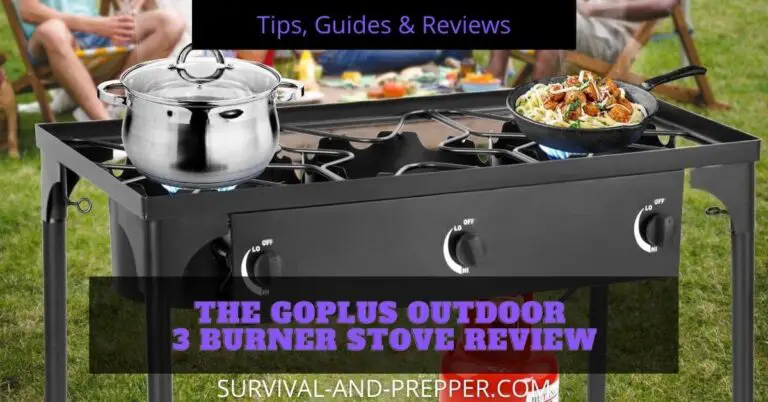Trapping – Coyotes, Fox and Beaver – Tips, Traps and Bait
For the avid hunter the end of hunting season often triggers a sullen time where they simply wait around for the next season to open up.
However, many of these hunters have never considered trapping. In ways it can be far more challenging then a normal hunting trip and often the seasons extend longer into the year than the hunting season does.
For instance in the state of Georgia the deer season runs from September 12 through January 10th if you include archery season. At the same time the season for Fur Bearing animals runs from December 1st through February 28th with there being no restricted season for Coyotes and Beaver in the state of Georgia.
By taking advantage of the trapping season you can have something to look forward to after you finish up the yearly hunting season.
Trapping can bring your hunting skills to a whole new level. With trapping it is more a matching of wits with the animal. You will need to develop tricks and techniques that allow you to outsmart the wiliest of the animals you are looking for.
With that in mind let’s dive into a bit of the gear, tips, tricks and techniques that you will need to learn for a successful trapping trip.
Trapping Supplies – Traps, Bait and More
Just like in hunting you need proper stands, blinds, clothing and weapons trapping has its own unique set of equipment.
While your clothing will likely be very similar in both hunting and trapping. You will need to provision for the rest of your trapping supplies.
Some of these items are optional and some may be required by your states laws.
Trapping Supplies List
- Map of the area
- Traps
- Bait & Lure
- Scent Free Gloves
- Scent Mask
- A Trapping License (Different in most cases than your hunting license.)
- Choke Stick
- .22 cal Rimfire
Map of the Area
A topographical map is critical in trapping for several reasons. The first obviously being so you don’t get lost. However, in today’s modern age that is less of an issue.
The real reason for a map is to study the lay of the land and be better able to judge the path that your intended prey are likely to take.
Once you have determined the path and target areas then you can use this same map to keep track of where your traps are set.
Traps
Whether you are targeting Coyotes, Foxes, Beavers or other Fur Bearers the proper trap is crucial. Many trappers opt for what is known as a body grip trap such as the Conibear. Foothold traps and snares are also frequently used.
Many of these traps come in multiple sizes and it is important to pick a trap that is properly sized for your intended target species.
A preferred manufacturer of traps is Dukes. They manufacture a wide variety of traps including foothold traps, body grip traps and snares in addition to more human options such as padded traps and cage traps.
For a fox, Dukes recommends a size 2 Coil Spring and for Coyotes a Size 4 Coil Spring. They do offer padded options in both of these traps. A size 3 is recommended for beaver.
Snares are a bit easier since you can often use one size for multiple species. However, they tend to be less forgiving in target species. A great option for a snare is this 12 pack by DakotaLine that you can pick up on Amazon. You can see a basic setup of this snare in the following video.
Bait and Lures
There are a variety of baits and lures that you can use when trapping. I am sure if you asked a dozen trappers what their favorite bait was you would likely get a dozen different answers.
With that in mind a lot of trappers swear by using dog food as a bait for both coyotes and foxes. Canned food tends to work well as a lure as well since it frequently has a stronger scent. Surprisingly the use of dog food seems to cut down on the accidental trapping of domesticated dogs since they are less likely to be enticed to the smell of dog food than they would be to a more natural bait such as a partial carcass or raw meat.
You can also use any type of meat or carcass such as leftover chicken bones, pork bones and fat trimmings from yesterday’s dinner.
In regards to beaver trapping you can use whole or portions of fish but this tends to be hit or miss. In almost every case you are going to have better luck using a lure which provides a musky scent that attracts the beaver.
My preferred beaver lure is “Taos” by Milligan. I have yet to have it fail to work within two to three days of setting the trap in an ideal spot.
Scent Free Gloves
Most wild animals by their very nature are leery of humans. Because of this controlling the natural body odors left by your presence is a must should you hope to have any luck.
This begins by ensuring your traps, bait and lure areas do not have any human scent on them. A set of scent free gloves works great for this. You can use any of the heavy duty cotton types found in your local hardware store for this. Carry a few pair with you so that you can change them out if you end up getting something on them.
If you decide to wash them after your trip, make sure to use a scent free detergent and no dryer sheets as the animals would notice this scent the next time you head out.
Scent Mask
Similar to the odor left behind by your hands when you touch things, the rest of your body gives off an odor as well. While this is not as critical when initially setting your traps since it will quickly disperse in the air, you want to mask your scent when you return.
It is possible that on your approach to check your trap line you discover that an animal had been just about to take the bait. If your scent was not masked you may have spooked them prior to your arrival.
Personally I like to minimize the noise I make when setting and checking my traps. On several occasions I have been setting and observed an animal before it noticed me. This allowed me to monitor it for a few minutes and decide on the perfect location to set a trap based on its movements and path of travel.
A Trapping License (Different in most cases than your hunting license.)
Just as you are required to have fishing and hunting licenses most states have a specific license for trapping. Check with your local fish and game department to verify if this is a requirement in your state and determine what you need in order to obtain the license.
Choke Stick
Some states require that you have what is known as a choke stick in order to assist you with releasing any domesticated animals that you find caught in your traps.
A choke stick is simply an animal catch or control pole that consists of a metal pipe with a cable that runs through it. This cable extends out the far end in a loop which you use to place around the next of the animal. You can then hold it at a safe distance while you free it from the trap and then release it.
The main downside to most of these is that they are rather large and inconvenient to carry with you. However, they are required by law in some states.
One solution to this is to manufacture 1 of your own from 3 pieces of 18 inch threaded pipe. If you discover that you need it you can assemble the pieces and thread the cable through in just a matter of minutes. This allows you to pack it out of the way in your pack when it is not needed.
.22 cal Rimfire
Another state specific Item at least in my case. Georgia requires that you carry a .22 cal rimfire firearm in order to dispatch any live furbearers that you find in your traps.
It is very important that you verify this with your state and specifically what caliber they allow or require.
It could be a huge fine if you are carrying the wrong caliber as they could assume you are attempting to hunt and not simply carrying it to dispatch animals as required.
Planning Your Target Areas to Trap Coyotes, Foxes and Beaver
Each species of animal you intend to target will have slightly different habits in a given habitat. In order to increase your odds you should attempt to learn these habits and use that information to assist you with your trap placements.
Coyotes and Foxes will often move through the thin brush around lakes, ponds and streams in addition to fields or logging roads. The thin brush in these areas allow them some concealment while they are hunting and traveling.
Often in thicker woods, common animal trails will be obvious either through worn areas or clearings through thicker brush.
I often look for choke points where the terrain will force animals to travel for easier passage. Gullies, ravines and large boulders often contribute to these areas. This is where your topographical map comes in handy.
Actual sightings or tracks are your best indicator on where they are specifically traveling. When looking for these tracks you should work on being able to tell the difference in fox, coyote and dog among other animals.
Depending on your location areas near the edge of subdivisions and towns can often be a wealth of fur, as the animals frequent these areas for easy food scavenging.
Setting Your Traps Using the Best Technique
When setting a trap, keep in mind how wily and cunning a fox or coyote can be. Simply tossing a single trap out is not likely to yield much in the way of results. However, with a few simple steps you can trick them into falling right where you want them.
The Basic Setup
For fox and coyote both you can set your trap in what is often known as a classic dirt hole.
Select a small bush or other vegetation that overlaps the edge of your trail. Dig a small 2 inch or so hole under the edge of this vegetation to mimic a hiding spot created by another fox or coyote. Add a small amount of bait or some lure to the bottom of the hole.
Now you can position and anchor your trap about 8 inches from the trap inline with the approach to the hole you have dug. This is to snag either of the front feet on your fox or coyote as they attempt to investigate the hole you have dug.
With your trap in position conceal it with loose sand, soil or leaves being careful not to spring it or weight it down too much.
Expanding The Basic Setup for Extra Punch
It is quite possible especially in the cases of foxes that they may not fall for this basic set up. There are several things you can do to increase its effectiveness.
Look for a small rize, log or stump within 10 feet or so of your hole that can be easily approached by the animal.
It is likely that the more wary of the bunch will attempt to use this location as a vantage point to observe the original set up.
If you place an unbaited and concealed trap on top of this feature or on the avenue that leads up to it from the trail, then it is quite possible you will snare these more cautious critters.
It is also possible that you could end up with a double catch. Often when one animal is caught others may circle it to examine what is occurring and you could potentially snag one of those.
A Word of Caution ensure that if using multiple traps they are set far enough apart to avoid the drag circle of the other trap. This will help to avoid the animals attacking each other or becoming trapped by both traps as they attempt to escape.
Collecting Your Catch
In order to minimize suffering and because it is a law in many places you need to check your traps on a daily basis. It is likely, especially in the cases of larger animals such as fox, coyote and beaver that the animal will not be killed when it is snared.
This is the primary reason why some states require you to carry the .22 Rimfire. It is a large enough caliber to dispatch the animal, but in most cases too small to hunt larger game. Make sure you verify with your state laws if you are required to carry a firearm and what calibers are allowed for this.
Due to the possibility of being scratched or bitten if the animal is a target species and not a domesticated dog, then you want to dispatch it prior to trying to remove it from the trap.
If you do accidentally catch a domesticated animal, do everything possible to humanely free the animal and get it treated. This is where that catch pole you are carrying comes into play. Use it to snare the animal by the neck and hold its mouth at distance while you free the foot. You should also contact the local authorities and notify them of the incident.
What Can I Do with Coyote, Foxes and Beavers When They Are Caught
With the exception of beaver these three species are not eaten and are primarily trapped for their fur, or to be rid of a nuisance.
However, in many cases you can sell the furs if properly harvested, you can also mount them just as with any other game as a trophy. Though I prefer to stick with those animals that I have a reason to harvest beyond just I want a trophy. (Food, Clothing, getting rid of a problem species, protection of family and livestock, etc).
Common Trapping Mistakes You Can Avoid
Some trappers, especially those who are just getting into trapping can make some fairly common mistakes. These can be avoided if some care is taken and let’s look at a few of the more common issues.
Use of the Wrong Size, Style, or Type of Trap for the Target Animal
One of the most common errors that new hunters make is thinking that they need the biggest trap possible in order to catch a large animal. It is critical that you first make sure to select a style of trap appropriate for your target animal. Then choose a size amongst those that is appropriate.
For instance while you can go after racoons with a body grip trap, a coon cuff style would be more appropriate in most cases. Same for sizes, while a snare comes in many different sizes, pick the one appropriate for your animal. A coyote needs a larger 1 than a fox for instance.
An Insecure or Loose Foothold Trap
Foot hold traps are very common when trapping coyotes and foxes. These traps are often criticized for being inhuman as it is believed they cause unneeded suffering. Many have likened the pain to you slamming your hand in a car door.
While this may be the case one of the best ways to minimize this suffering is to ensure that the trap is properly deployed and securely fastened in place.
Doing so will help to ensure that if you do trap an animal it remains where you will find it and can end the suffering during your daily check of your traps. If it is not secured then the animal could pull it loose and it could cause further injury and suffering.
Failing to Check Traps Frequently
Just as failing to properly secure your traps can cause unneeded suffering for the animal, failing to check your traps frequently can result in an animal being held in pain for longer than necessary.
There is the additional factor that when snared or caught in a foot hold trap the animal is unable to seek out food and water and could face even greater suffering if you do not frequently check the traps.
The final issue is that many state laws dictate a time frame in which you must check your traps, failure to do so could result in stiff criminal penalties.
To Much or too Little Lure/Bait and Proper Placement of the Bait
One issue that you might not consider is proper baiting. While it would seem that more bait is always better this is not the case. One of the leading causes of injuries and places in which trappers get into trouble is trapping non target species.
Animals such as dogs, birds and even out of season furbearers are frequently caught in traps unintentionally.
It is important to conceal your bait from above view as many birds will see it as a food source and attempt to eat it triggering your traps. This not only results in your trap being triggered and you missing the chance at a target species it also almost always results in the death of the bird due to their fragile makeup.
Using too much bait is just as bad and generally you should use no more than around a 2 inch piece as this is generally sufficient to simulate a hidden catch and lure in your target species.
Inappropriate Trap Styles Human or Domestic Animal Areas
Another common mistake is using traps in an area where it is not appropriate. It has been mentioned that areas around human habitats are often full of target animals, they also pose some issues of their own.
It is important that you consider the possibility of dogs, cats and even people wandering into your trap zones and accidentally getting caught in a trap. Make sure that you have taken precautions to prevent this if at all possible.
If you cannot safely place your traps in an area then seek out a better and safer deployment location.
Failing to Respect Property Rights / Trespassing
One of the biggest issues is property rights. Oftentimes when in forested areas boundaries may not be completely obvious. It is very important that you ensure you have a right to trap on the land you are working.
Some states actually require that you have written permission on your person from the land owner for the land that you are trapping on.
Property rights are an important one as the land owner holds the rights to the resources on his land and should be aware of any potential dangers to himself or others in the form of traps that are on his property.
